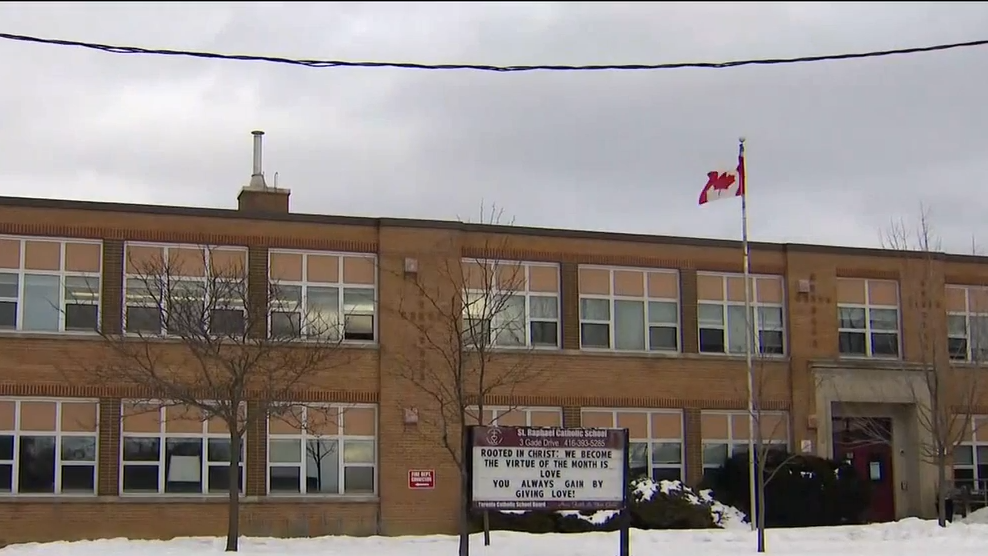
Several teachers at St. Raphael Catholic School are officially refusing to work and some parents are keeping their kids out of in-person learning after a report found classroom air often exceeded recommended carbon dioxide levels.
Posted Feb 24, 2021, 05:32AM EST
Several teachers at St. Raphael Catholic School are officially refusing to work and some parents are keeping their kids out of in-person learning after a report found classroom air often exceeded recommended carbon dioxide levels.
WATCH VIDEO: https://toronto.citynews.ca/2021/02/23/st-raphael-carbon-dioxide-concerns/
Experts say there are health concerns and some teachers say they’ve been suffering symptoms for years.
“How can they learn when the air quality is not up to par?” says parent Steve Zamengo. “It’s not just the students, it’s the staff, it’s everybody in the school.”
Zamengo is keeping his daughter, who attends Grade 7 at St. Raphael’s, at home. He says he’s too worried to send her to class after learning of the air quality at the school.
An air quality report commissioned by the Toronto Catholic District School Board (TCDSB) found classrooms at St. Raphael regularly exceeded recommended carbon dioxide limits of 800 and 1,200 parts per million (ppm) — an indicator of ventilation quality in occupied buildings.
The report states that the school does not have built-in mechanical ventilation, though there were portable air filters in classrooms at the time of the study. Investigators also found open windows didn’t improve air circulation.
The health impacts of carbon dioxide levels above 1,000ppm are collectively known as “sick building syndrome.” Ryerson University researcher Thomas Tenkate says symptoms include “headache, fatigue, skin and eye irritation and a bit of respiratory irritation.” He says that children could also experience cognitive effects.
“At that level, students are tending not to perform as well in regards to decision-making and numeric ability,” he explains. “What’s worrisome is, particularly for children, we consider them to be a vulnerable population because they basically breathe in more air than adults do.”
The educators’ local union representative says at least 11 teachers from St. Raphael’s have come forward saying they have symptoms.
“They said, in their own minds and discussions with me, ‘It makes sense now I’ve been consulting with my medical practitioners for the last couple of years describing the symptoms and now it’s starting to make sense,’” says Julie Altamore–DiNunzio, Toronto elementary unit president of the Ontario English Catholic Teachers Association (OECTA). “When they were home doing remote learning in December, January and part of February, they were not experiencing any of the symptoms at all.”
Just a week after being back in the classroom, Altamore–DiNunzio says teachers began experiencing symptoms once again and says some teachers would feel safer if they could teach remotely.
St. Raphael is one of 40 Toronto Catholic schools with no mechanical ventilation.
“In my view, this may just be truly the tip of the iceberg,” Altamore–DiNunzio adds.
Since the pandemic, air quality at schools has been a priority for the Ministry of Education. The ministry has given the TCDSB $4 million to improve ventilation at schools.
A spokesperson tells CityNews that the board has used the money to buy more than 2,300 filtration units, including portable high-efficiency particulate air (HEPA) filters for schools with no built-in ventilation systems.
In a statement, the TCDSB says St. Raphael remains a safe place for staff and students and that carbon dioxide readings never reached a level that would be deemed unsafe.
The Ministry of Labour, Training and Skills Development has been notified of a work refusal and an inspector has been assigned to the school. The investigation is ongoing.









